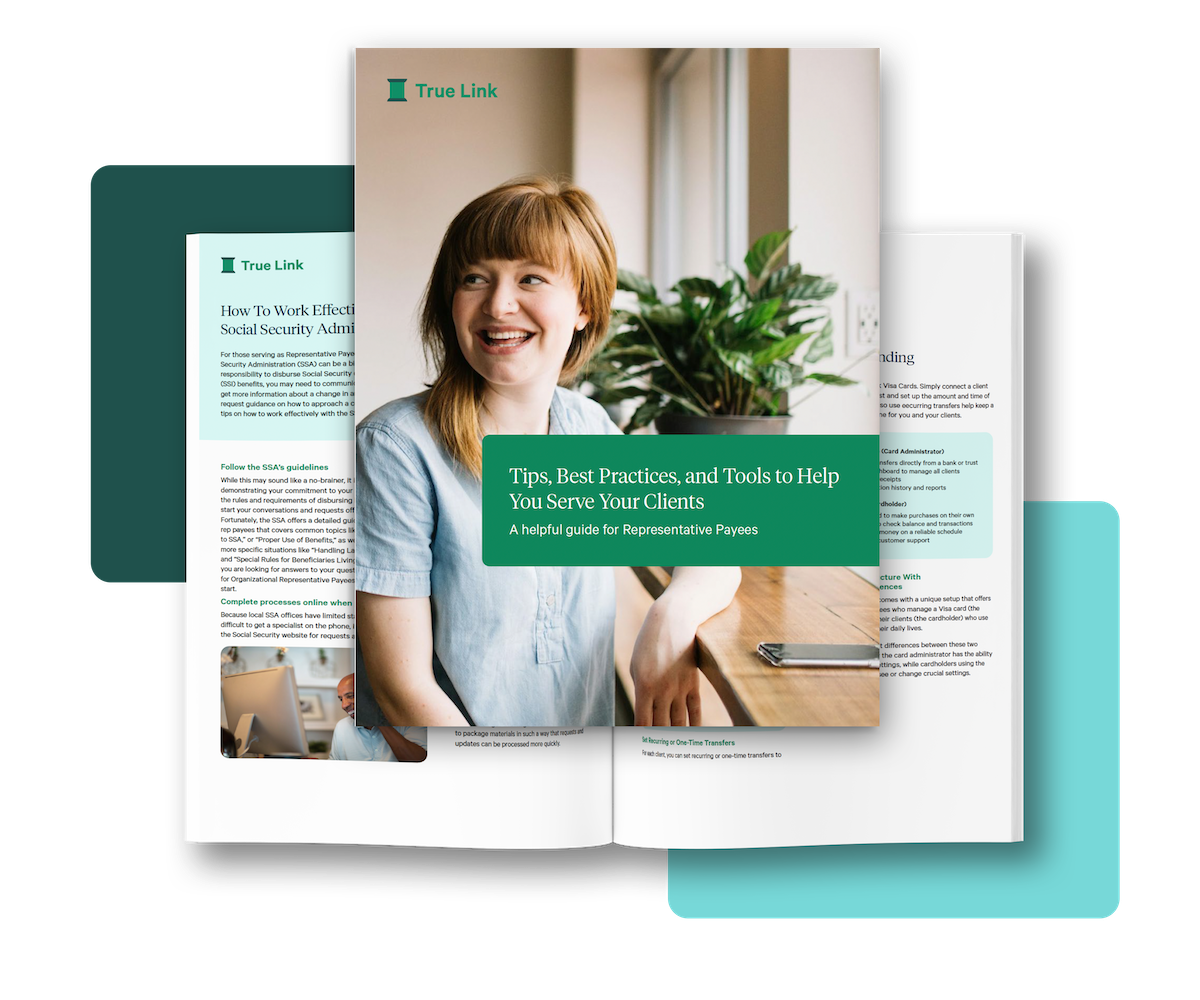Caregiver Hiring 101: What to Consider When Paying a Caregiver from a Trust
This article is a part of True Link’s Guest Expert Series. We have interviewed leaders knowledgeable in disability planning, elder law, and trust administration and will be sharing their expertise with you in a series of videos and posts. Note: this article is not intended to provide investment, legal, tax, accounting or medical advice. Before making decisions involving investing, legal, tax, accounting or medical concerns, you should consult appropriate professionals regarding your specific situation.
When you are responsible for the care of an individual with disabilities, finding, hiring, and managing in-home caregivers is among the more complex aspects of your role.
Ann Koerner, the President of National Care Advisors, agrees, “Finding quality caregivers who are reliable, who you want to have in your home, who are going to follow your direction is one of the biggest challenges [for] families that are providing care for an individual with special needs or elder care.”
Whether you are currently searching for a caregiver or already have someone in your home, here are a few things you will want to consider.
Understand your role as an employer
If you choose to hire a private caregiver and pay them directly using trust funds, you are likely entering an employer-employee relationship. As Rachel Green, the CEO of TEAM Risk Management Strategies reminds us, “If you are paying for caregiving services over a long period of time [...] that person is an employee of the trust and there are considerable burdens and responsibilities that come with that relationship.”
When establishing your role as a “employer,” there is a difference between hiring a household employee and paying an independent contractor. While it can be tempting to hire a caregiver on a contractual basis, the IRS provides strict guidelines on when a household employee should be classified as such. It’s also important to note that if a family member is being paid to provide the caregiving services, they are typically still considered an employee.
There are a number of laws and regulations that govern what an employer must do at the state and federal levels. This can include responsibilities like payroll and recordkeeping, proper tax withholding and filing, fair hiring practices, purchasing workers compensation insurance, providing sick leave, and more. It can be a lot for an individual to take on, and as Green shares “If you miss a step, that’s a potential liability.”
Know your options
Employing a caregiver and taking on those responsibilities and liabilities isn’t your only option as a trustee. Working through a home care agency is one route you can take, though often the most expensive. Not only will the caregiver be an employee of the agency, instead of the trust, but if your caregiver is unable to work, the agency may have other caregivers who can fill in.
If you want to hire a private caregiver instead of going the home agency route, you could choose to work with an employer of record like TEAM. These firms offer services that can take on the administrative and liability challenges related to employing a caregiver.
Develop a plan with clear expectations
No matter what route you use to find a caregiver, you want to start with a clear vision of that person’s roles and responsibilities in the home. As Koerner emphasizes, “it is important to establish what the care plan is [and] what you actually want that individual to do.” This can include things like: what hours the individual will work; who can give them instructions; are they expected to run errands or provide transportation; and what types of personal care will need to be provided.
Once this is in place, Koerner recommends “make[ing] sure you have a mechanism to supervise them.” You may want to set up regular check-ins to provide feedback and hear from the caregiver about how things are going. As you learn what works best for the caregiver-beneficiary relationship over time, be sure to update the care plan when you make adjustments.
Remember, hiring a good caregiver is meaningful work
While hiring and managing in-home care can be daunting, finding a high-quality caregiver can have a huge impact on a beneficiary’s quality of life. As you navigate this process, it can help to keep this end goal in mind. True Link is proud to support trustees and fiduciaries fulfilling this crucial role.
Want to watch these videos on Vimeo? Here are the links to the guest expert videos related to this topic:
- Tips for Finding and Employing Caregivers - Ann Koerner, President & Founder, National Care Advisors
- Managing Risks when Employing a Caregiver for a Trust Beneficiary - Rachel Green, CEO, TEAM Risk Management Strategies











